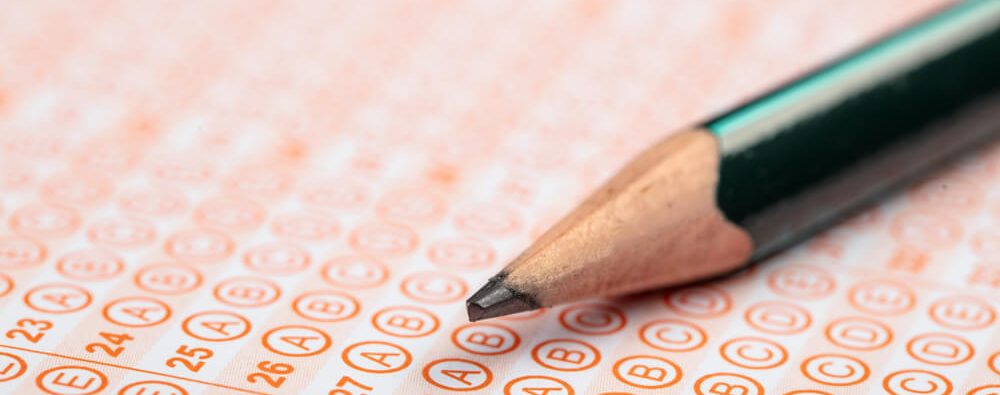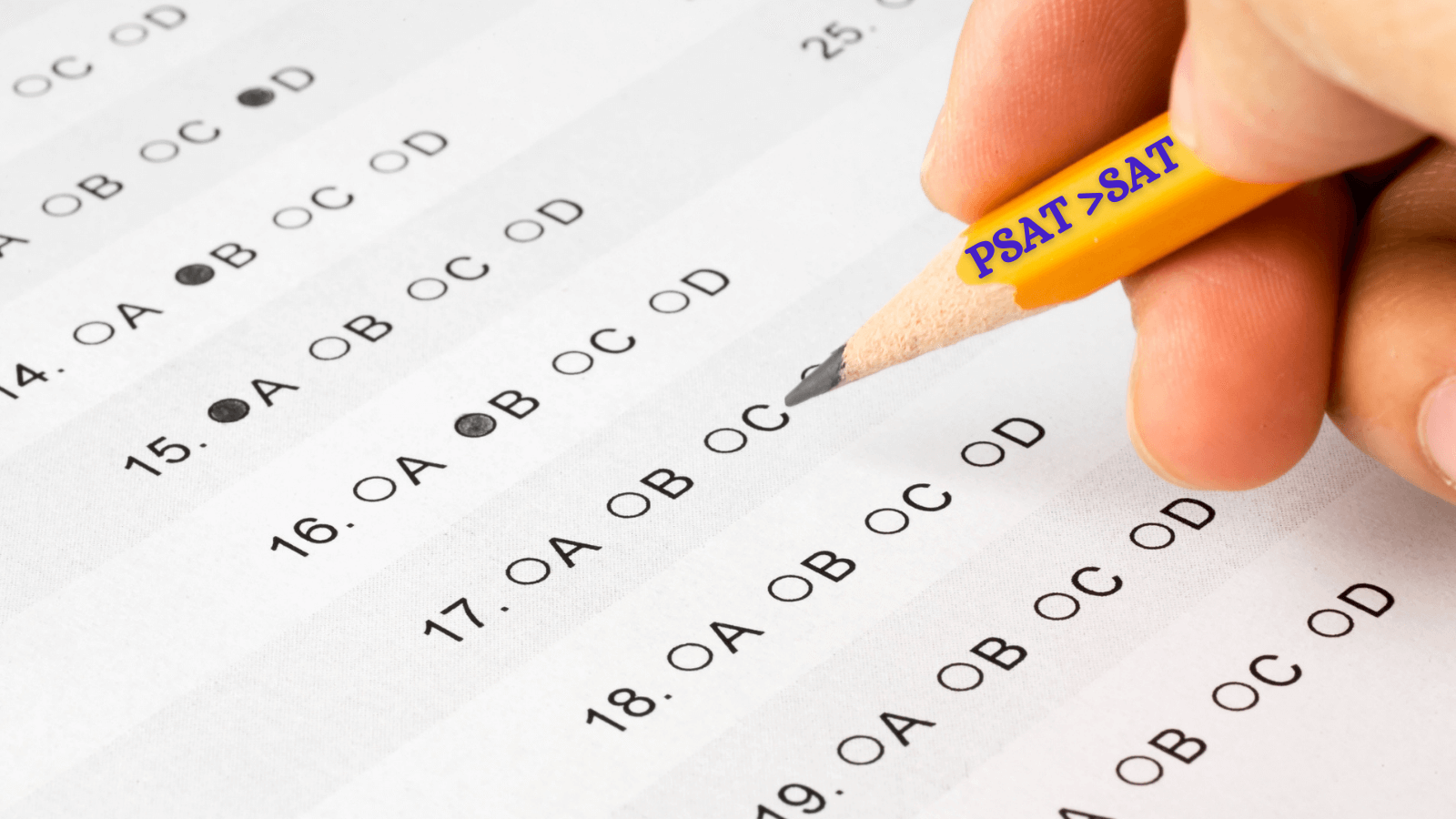Student-centric advice and objective recommendations
Higher education has never been more confusing or expensive. Our goal is to help you navigate the very big decisions related to higher ed with objective information and expert advice. Each piece of content on the site is original, based on extensive research, and reviewed by multiple editors, including a subject matter expert. This ensures that all of our content is up-to-date, useful, accurate, and thorough.
Our reviews and recommendations are based on extensive research, testing, and feedback. We may receive commission from links on our website, but that doesn’t affect our editors’ opinions. Our marketing partners don’t review, approve or endorse our editorial content. It’s accurate to the best of our knowledge when posted. You can find a complete list of our partners here.
Top SAT Math Tips in 2024
 By
Gabriel Jimenez-Ekman
By
Gabriel Jimenez-Ekman 
Gabriel Jimenez-Ekman is a content editor and writer at Scholarships360. He has managed communications and written content for a diverse array of organizations, including a farmer’s market, a concert venue, a student farm, an environmental NGO, and a PR agency. Gabriel graduated from Kenyon College with a degree in sociology.
Full BioLearn about our editorial policies

Maria Geiger is Director of Content at Scholarships360. She is a former online educational technology instructor and adjunct writing instructor. In addition to education reform, Maria’s interests include viewpoint diversity, blended/flipped learning, digital communication, and integrating media/web tools into the curriculum to better facilitate student engagement. Maria earned both a B.A. and an M.A. in English Literature from Monmouth University, an M. Ed. in Education from Monmouth University, and a Virtual Online Teaching Certificate (VOLT) from the University of Pennsylvania.
Full BioLearn about our editorial policies

If you’re looking for tips to help you do your best on the SAT math section, look no farther. We’ve assembled a guide to help you navigate the test and showcase your knowledge as effectively as possible. Read on for some tried and true on how to pace yourself, use the process of elimination, and how to convert questions into equations!
Familiarize yourself with the structure
The SAT math test has undergone some big changes since the implementation of the new digital format of the test. The SAT math section is made up of 44 questions which you must complete in 70 minutes total. Due to the new changes to the SAT, students can now use a calculator on the whole math section, rather than just one small portion.
Math topics breakdown
Questions on the SAT math section will fall into one of four main categories. These are Algebra, Advanced Math, Problem-Solving and Data Analysis and Geometry and Trigonometry. This covers a huge breadth of mathematics so you’ll want to make sure to study each topic thoroughly before the exam.
Remember that the SAT tests each of these topics in a relatively predictable way; their past questions are typically very indicative of the questions they’ll ask on your exam. So, instead of an in-depth review of each of these entire fields, which could go on forever, you might be best served by digging into some practice tests to find out what specifically you’ll be expected to know.
| Type of Math | Number of Questions |
| Algebra | 13-15 |
| Advanced Math | 13-15 |
| Problem-Solving and Data Analysis | 5-7 |
| Geometry and Trigonometry | 5-7 |
Also see: ACT vs SAT: how to decide which test to take
Answer every question
The SAT does not penalize for wrong answers; that means that you should mark down an answer for every single question. Even if you have no idea what the answer is, you are better off guessing than leaving it blank. Since the multiple-choice questions have five options each, you’ll have a 20% chance of getting each one right. Those are free points, ready for the taking!
If you reach the final few minutes of the exam and you still have blank answers, drop everything you’re doing and go back to fill in a random answer for each of those blank questions. You should never hand in an exam with blank answers – that would just be a waste of potential free points.
Skip harder questions and come back to them
Remember that on the SAT, every question is worth one point. Since they are all weighted equally, you should make sure not to devote too much time to one question while neglecting others. You’re best off giving each question a set amount of time on your first run-through and then coming back to the ones you were unsure of.
Getting a question wrong loses you one point, but spending too much time on a question can lose you many more points by not allowing you the time to answer several other easy questions. Focus more on getting as many right answers as you can than getting every question right.
Related: What is a good SAT score?
Estimate when appropriate
All of the SAT math section questions are multiple-choice. Sometimes, on questions like these, your answer is obvious from the start. For example, on a problem where you know the answer will be a whole number, you can eliminate any fractions from the beginning. Or, if you know it is somewhere in the range of 1-100, you can eliminate any numbers over 100.
If you start solving an equation and are unsure of the exact answer, but understand what range the answer might be in, take a look at your potential answers. You can rule out any unreasonable ones and make an educated guess, bringing your chances of a right answer up from 20% to 80%.
Convert word problems into algebraic equations
The SAT math section contains a lot of problems that are written in word form. Rather than just giving you an equation to solve, they’ll offer a word problem that you must then convert into an equation. Don’t get tripped up by this – it may be different than what you’ve learned in a classroom, but it’s nothing to fear. Every time you see a problem like this, remember that your very first step would be to convert it into numbers.
In your studies, it’s a good idea to focus on some mathematical terminology, so you aren’t thrown off when you see the equations you’ve studied in class written in word form. Suprex Learning has a great guide to familiarize you with these mathematical terms in a conversational setting. This will help minimize confusion and cut down on the time it takes you to dig into your problem’s equation.
Practice your pacing
As with every part of the SAT, pacing is key in the math section. You don’t want to devote too much time to any one question. The best way to hone your pacing is to take several practice tests. Sketching out an estimated pace can be a great way to plan your exam, but the only way to internalize that plan is to put it into practice.
Once you’ve taken several practice exams, you’ll get an intuitive idea of how much time you can afford to spend on each question. You’ll probably find that on some practice runs, you’ll run out of time before finishing. On others, you’ll finish far before the deadline. Eventually, you’ll hone in on a pacing that gives you just enough time. This is how you’ll want to pace yourself.
Try working backwards
If you’re stumped on a multiple-choice question, try working backwards! You’ve got five answers already listed on the page – try plugging them into the equation and see if any of them work. Even if you don’t narrow down your answer completely, you might be able to eliminate a few options, and your chances of making a correct guess will go up substantially.
Also see: Top SAT reading tips
Study, study, study
We should emphasize that the tricks on this list are all about navigating the test and getting as many questions right as possible with the knowledge you’ve acquired. That being said, they won’t take you far if you don’t have that knowledge to begin with. Make sure to start studying early and hold yourself to a disciplined study schedule. That might mean finding a test prep tutor or forming a study group with friends. Make sure to have at least some knowledge of every skill that the SAT tests.
Additional SAT and college admissions resources
When it comes to our resources on the SAT, this is only the tip of the iceberg! Check out our guide on free SAT study resources, and on tips for the SAT reading section to start. Learn how to improve your SAT score in 6 steps and ease your pre-test jitters with our guide to reduce test anxiety.
Remember, in addition to our SAT resources, we are here to help you through every step of the college application and admissions process. That includes deciding how many colleges to apply to, how to make your application the best it can be, and how to answer the Common App essay prompts. If you’re taking the SAT in your junior year, you can also check out our guide for making the most of your summer before senior year. Good luck, and make sure that you apply for all the scholarships you are eligible for!
Frequently asked questions about SAT math
Is there a penalty for guessing on the SAT Math section?
What is the difficulty level of the SAT math questions?
What topics will be on the SAT Math section?




 SAT" printed on his pencil">
SAT" printed on his pencil">
